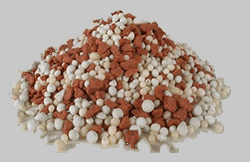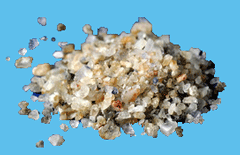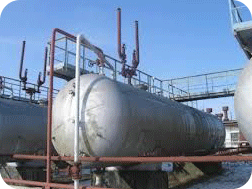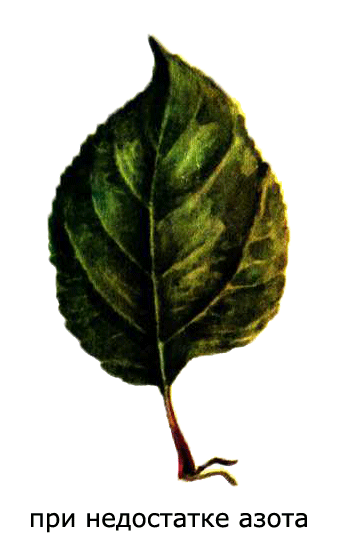What natural fertilizer contains nitrogen. nitrogen fertilizers
Friday, February 20, 2015 4:35 pm + to quote padNitrogen is one of the most demanded by plants chemical elements. Its lack can slow down the growth and development of most garden and horticultural crops. Plants experience the greatest need for nitrogen in the spring, at the time of their awakening and active growth. Therefore, we will start talking about the use of mineral fertilizers in the country with nitrogen fertilizers.
Everyone has their own requirements
Not all crops equally need a high nitrogen content in the soil - this is the first thing we need to remember so that top dressing will benefit the plants and not harm them.
First group
Under these crops, nitrogen fertilizers should be applied both before sowing (planting) and during the growing season; recommended doses - at least 25 g of ammonium nitrate per 1 sq.m of plantings (if other fertilizers are used, their amount is adjusted depending on the nitrogen content).
- vegetables: cabbage, potatoes, pumpkin, zucchini, pepper, eggplant, rhubarb;
- decorative: dahlia, panicled phlox, peony, rose, balsam, nasturtium, violet, carnation, zinnia, lilac and others;
- fruit and berry: raspberry, blackberry, strawberry, cherry, plum.
Second group
These crops have medium nitrogen requirements; the recommended dose of fertilizers for them is the equivalent of 20 g of ammonium nitrate per 1 sq.m of crops or plantings.
- vegetables: cucumber, tomato, beet, carrot, garlic, corn, parsley;
- decorative: delphiniums, most annual flowers;
- fruit and berry: currant, gooseberry, apple tree.
Third group
Moderate nitrogen requirements. The recommended dose of fertilizers is 15 g of ammonium nitrate per 1 sq.m of cultivated soil.
- vegetables: leafy vegetables, onions, radishes, early potatoes;
- decorative: all types of bulbous, saxifrage, primrose, daisies, adonis, juniper and others;
- fruit: pear.
Fourth group
Plants with low demands on the nitrogen content in the soil; they need 7-8 g of ammonium nitrate per 1 sq.m of plantings.
- vegetables: peas, beans, aromatic plants;
- decorative: young, stonecrop, rhododendron, japanese azalea, heather, erica, kosmeya, purslane, oriental poppy and others.
How to determine if a plant needs to be fed
In nature, nitrogen reserves are concentrated primarily in humus; this substance passes into a form accessible to plants as a result of the decomposition of organic matter under the influence of soil microorganisms. However, natural reserves for the full development vegetable crops and good harvest not enough, so they need to be replenished from other sources.
Signs of nitrogen starvationoften manifested by a slowdown in growth and development; leaves may turn yellow or become covered with large yellowish-green spots. Atstrawberriesa red border appears along the edges of the leaves, a mustache is poorly formed, androsesflowering weakens, shoots grow slowly and poorly woody.
tomatoesbegin to lag behind in growth, shed the fruit that has set; their leaves become smaller and turn yellow. Atbeetsleaves turn yellow and quickly die off, their growth slows down.
If there is not enough nitrogentrees, they are weakly branched and hard to endure the winter cold. The fruits are tied small, and even they often crumble. In pome crops, the leaves turn pale and shrink; in stone fruits, the bark of branches may turn red.
Looking for the cause of the deficiency
Before you run for fertilizer, it's good to analyze the causes of the problem, especially if you are fertilizing regularly and signs of nutritional deficiencies still appear.
The point is that farnot all nitrogen is available to plants. Its absorption may be hindered, for example, increased acidity of the soil . Temperature (not so much the air as the ground) is another essential condition. And on loose sandy soils, poorly retaining moisture, easily soluble fertilizer components are washed out too quickly during irrigation.
Choosing the right solution
Here we need some theoretical knowledge. The most important thing to remember is that there are two forms of nitrogen available for uptake by plants −nitrate and ammoniacal. And depending on the conditions, either one or the other is more effective:
- at hyperacidity soil needs nitrate nitrogen;
- if the soil neutral or close to alkaline, ammonia nitrogen is more effective;
- bye soil is not warm, nitrate nitrogen “works” better (when heat comes, both options will become acceptable).
On permeable sandy soils, it is recommended to apply fast-acting fertilizers in small doses, but regularly (while not forgetting to improve the composition and structure of the soil). In some cases, it is advisable to use foliar top dressing.
Overfeeding is bad
Everyone knows that a lack of nutrition is harmful to a plant. Butexcess nitrogenresults are also not good. It causes an abundant growth of green mass, but you can not wait for flowers and fruits from an “overfed” plant at all. But this is not the worst. Such cultures are vulnerable, and fungal diseases affect them more often than others.
If trees and shrubs received an excessive dose of nitrogen in the fall, sudden temperature changes can kill them: root system cannot resist the cold, and when the soil freezes, it dies. Growth and fruit shoots freeze out - even if such a plant overwinter, it will not give a good harvest next summer.
And the worst thing is that many plants (in particular, beets, early potatoes, lettuce and others) tend to accumulate excess nitrogen in the form of salts. These are the samenitrates, about the dangers of which everyone has heard. It is the fear of nitrates that makes many people stop using nitrogen fertilizers - and the solution is quite simple: do not get carried away with top dressing.
You can determine the excess nitrogenon appearance plants. In addition to lush growth, dark green coloration and curled leaf tips will indicate a problem.
What are nitrogen fertilizers
All organic fertilizers(manure, bird droppings, composts , peat , lake silt) contain nitrogen. But, as a rule, it takes time for it to turn into a mineral form available to plants. If you need to quickly fill the nitrogen deficiency, usenitrogen fertilizers, the raw materials for the production of which are Nitric acid and ammonia.
Urea (carbamide, carbonic acid diamide)
The most concentrated nitrogen fertilizer; is produced more often in granules. It dissolves well in water. The nitrogen content (in amide form) is not less than 46%. Nitrogen from urea is poorly absorbed by plants - it must first be converted into a mineral form, and this process directly depends on the acidity of the soil and its temperature. The most effective use of urea for fertilizing on neutral soils in the warm season.
The best way to use - foliar nitrogen supplements, especially useful for fruit trees(in the spring, starting from the moment the leaves form and then every 10-12 days during May and June; the solution is prepared in the proportion of 50 g of fertilizer per 10 liters of water).
In general, urea is best applied in liquid form; when applying dry fertilizer, make sure that it is evenly distributed in the soil - a high concentration of nitrogen is fraught with burns in plants.
: Matchbox-13 g, tablespoon -10 g, teaspoon -3 g.
Ammonium nitrate (ammonium nitrate; ammonium nitrate)
Easily soluble in water, fast-acting fertilizer, most often produced in granules. Nitrogen content 34 - 35%. Due to the fact that nitrogen in this fertilizer is in both nitrate and ammonia form (equally), it has a universal application and can be used in almost any conditions and for any crops (some sources do not recommend applying it under cucumbers and melons). It should be borne in mind, however, that with regular use ammonium nitrate acidifies the soil.
For reference (how to measure the right dose of fertilizer): matchbox -17 g, tablespoon -12 g, teaspoon -4 g.
Ammonium sulfate (ammonium sulphate)
Let's well dissolve in water; Available in the form of a white or grayish crystalline powder. During storage, it practically does not cake. The nitrogen content (in ammonia form) is about 21%. Most often used in the main application of fertilizers.
Suitable for light, permeable soils as the ammonia nitrogen is fixed in the soil. But it must be taken into account: this fertilizer strongly acidifies the soil (therefore, its use is optimal for fertilizing rhododendrons, heathers and other lovers of acidic soil). On neutral and weak acidic soils recommend before making (especially in rows or planting holes) to mix ammonium sulphate with lime or chalk (10 g of fertilizer - 13 g of lime). But it should not be mixed with ash under any circumstances.
For reference (how to measure the right dose of fertilizer): matchbox -19 g, tablespoon -14 g, teaspoon - 5 g.
Calcium nitrate (calcium nitrate; calcium nitrate)
Easily soluble fertilizer produced in large cream-colored granules. Nitrogen content (in nitrate form) from 15 to 17%. Alkaline fertilizer, especially effective on acidic soils. It absorbs moisture very well and quickly caking, so it needs to be stored in a waterproof container. Great for liquid dressings, especially under bulbous crops; recommended for indoor use.
Sodium nitrate (sodium nitrate; sodium nitrate)
Well soluble in water, yellowish or grayish fine crystalline powder. The nitrogen content (in nitrate form) is about 16%. Alkaline fertilizer universal application, most effective on unlimed acidic soils. It is better to use in the form of liquid dressings (in particular, for beets and potatoes). Does not cake during storage.
When using any fertilizer, do not exceed the doses and fertilizing times recommended for each crop. Do not forget that the need for nitrogen in most plants decreases in the second half of summer, and at this time the application of nitrogen fertilizers should be reduced, if not completely abandoned, so that perennial crops have time to fully prepare for the upcoming winter. But in the spring, both the garden and the vegetable garden will be grateful if you replenish the food supplies necessary for the active growth of green pets.
This includes fertilizers, which contain one of important elements nutrition - how nitrogen. The active substance of this fertilizer nitrogen is denoted
sign N.
Nitrogen - as a mineral fertilizer contained in various types: ammonia (compound of nitrogen with four hydrogen particles), nitrate (compound of nitrogen with oxygen) and amide (compound of nitrogen with two hydrogen particles). related to amides urea as a fertilizer and calcium cyanamide.
Amide urea nitrogen at positive temperature it quickly converts to ammonia, then urea as a fertilizer, added to the soil, its properties are slightly different from ammonia fertilizers.
Ammonia nitrogen in the ground under the action of certain types of bacteria converted to nitrate. The rate of conversion of ammonia to nitrates is completely dependent on the temperature of the soil, its moisture and aeration (friability). The form of nitrogen changes and the agronomic properties of the fertilizer change as well.
Where to add nitrogen fertilizers for greater effect

Where mobile (water-soluble) nitrogen is not enough. There is little of it in podzolic (especially sandy) soils, more in gray forest lands and much more in chernozems. But there is no land where there would be such an amount of soluble nitrogen that plants could bring high yields for many years without the addition of nitrogen fertilizer. Means everywhere you need to add nitrogen fertilizers, but the doses depend on the content of soluble nitrogen in the soil.
What other methods, besides the addition of fertilizers, can improve the nitrogen supply of plants
The very first - it is tillage. When the site is kept clean from weeds and in a loose state, with normal (but not excessive) moisture, the humus that is present in the soil decomposes and the nitrogen insoluble in water, inaccessible to plants, partly passes into a well-assimilated state. The conclusion is simple on lands that are well cultivated, give nitrogen in smaller doses. You can increase the amount of nitrogen when you add such as organic fertilizers and green fertilizers, especially from legumes (lupine, peas, pelushka, vetch, etc.).
Agronomic properties of some mineral nitrogen fertilizers and their influence on the methods of fertilization

Mineral nitrogen fertilizers - this is nitrogen in the nitrate form (see table), nitrate fertilizers are called, they are not attached to the ground. They are always in the soil solution.
When it gets hot then water from the upper layers evaporating intensely especially when there is soil crust. Instead, water rises from the lower layers, and with it nitrate nitrogen to the very surface of the earth. This is bad, since there are practically no roots in the top layer.
When it rains, the opposite happens. Only after a light rain plants improve, because nitrate nitrogen from the top was washed into the lower layers of the earth, where there are more roots and, accordingly, the nutrition of the vegetation has improved.
During heavy rains nitrate nitrogen fertilizers deeply washed into the soil with water, away from the roots and they lose it. This occurs mainly in autumn, ammonia nitrogen is absorbed by the soil.
Means, ammonia nitrogen fertilizers and calcium cyanamide can be given in autumn without problems in loss of nitrogen. They are easier to use by plants on slightly acidic soils (with a pH greater than 6.0), while nitrate fertilizers must be given in acidic soils. Ammonia fertilizers a little acidify the soil, nitrate or alkalize.
The most common nitrogen fertilizers are:
fertilizer |
what form is nitrogen in |
weight 1 m 3 fertilizer in t or 1 liter in kg |
impact on soil |
note |
|
Ammonium nitrate |
Half in nitrate, half in ammonia |
acidifies |
Half of the nitrogen from the soil is not washed out, half can be washed out |
||
Ammonium sulfate |
In ammonia |
Strongly acidifies |
From the soil at first is not washed out |
||
Ammonium sulfate - sodium |
|||||
Urea |
In the soil during warm weather, nitrogen quickly turns into ammonia form. |
acidifies |
Late autumn in cold weather it is better not to apply, it can wash out |
||
calcium nitrate |
In nitrate |
alkalizes |
The soil does not bind and can be washed out |
||
sodium |
|||||
Ammonium chloride |
In ammonia |
acidifies |
From the soil the first time is not washed out |
||
calcium cyanamide |
Nitrogen in the soil |
alkalizes |
When should mineral nitrogen fertilizers be applied to the ground?

They need apply in late autumn like phosphorus, or potassium, or magnesium in the form of the main or early spring. On the clay soils(but not on sand) should only be given ammonia fertilizers. They won't wash no nitrate fertilizers .
When spring comes, we begin to give into the soil nitrogen fertilizers(ammonia, nitrate and urea as a fertilizer). Both in spring and in autumn, the method is simple - simple dispersion, and then digging. In the summer time first of all we give nitrate fertilizers (nitrates) , if they are not, then give ammonia and urea as a fertilizer.
It's an acidic fertilizer therefore, before applying on podzolic, as well as on light unlimed soils it must be neutralized add 0.6 kg of limestone or chalk per 1 kg of fertilizer. The average application rate is 250-450 g per 10 m². ammonium nitrate must not be mixed with organic fertilizers: peat, straw, sawdust, as spontaneous combustion and explosion from detonation are possible. Pack it in waterproof bags and store in dry rooms.
If it gets on the mucous membranes and skin, will have a local irritant effect. Therefore, when working, it is necessary to use overalls and personal protective equipment. Wash hands thoroughly with soap and water after finishing work. warm water and rinse your mouth.
In case of eye contact you need to rinse them with water until the burning sensation disappears and consult a doctor, on the skin - wash it with water and lubricate with petroleum jelly or zinc-stearin ointment.
In case of nitrogen oxide poisoning, released during the combustion of ammonium nitrate, it is necessary: immediately pull the victim out of the fire; free from clothing that restricts breathing; give a sniff of cotton wool soaked in ammonia; call a doctor immediately.
Lime-ammonium nitrate is a less concentrated fertilizer (17.0-22% nitrogen), but has better properties. Obtained by adding finely crushed limestone or chalk (CaCO3) to the melt of ammonium nitrate. She follows weakly. The calcium contained in it neutralizes acidity, so it must be applied on acidic soils. On neutral or alkaline soils, it has no advantages over ammonium nitrate. The average application rate is 400-500 g per 10 m².
Dangerous doses of mineral nitrogen fertilizers
Insufficient amount of digestible nitrogen in the ground inhibits the development of the plant and leads to a decrease in the quantity and quality of the crop. Excess amount other fertilizers, gives a bad effect on plants.

With a lack of nitrogen black currants form short and thin shoots, small, pale green leaves. Flowering and the formation of berries proceeds poorly.
In strawberries, the color of young developed leaves changes from light green to yellow, their growth stops. Reddening cloves first appear on old leaves, with time they acquire a bright yellow tint, part of the leaf blade dies off.
The worst period- the survival rate of seedlings in the late summer period (winter hardiness weakens, the fruits become less sweet, poor color and poor storage). Too much mineral nitrogen delays the entry of young trees into the fruiting season.
Advantages of nitrogen fertilizers in granules
Ammonium nitrate - main nitrogen fertilizer produced by our industry. It is produced in the form of spherical granules of 1-3 mm, flakes or crystals. To prevent this fertilizer from caking, a small amount of phosphate rock, calcium, magnesium nitrates, etc. are added to it during the production process, which give it a yellow tint. Sometimes fuchsin and amaranthus are used as an additive, coloring it red.
Granulated ammonium nitrate in a warm and humid climate, it has better flowability and spreadability than scaly and crystalline. It is a universal nitrogen fertilizer with high content nitrogen (33.6-34.8%). Suitable for all vegetable crops for the main, pre-sowing application, including surface, and top dressing. It contains one half of the nitrogen in the slow-acting ammonia form, the other half in the mobile, fast-absorbing nitrate form.

